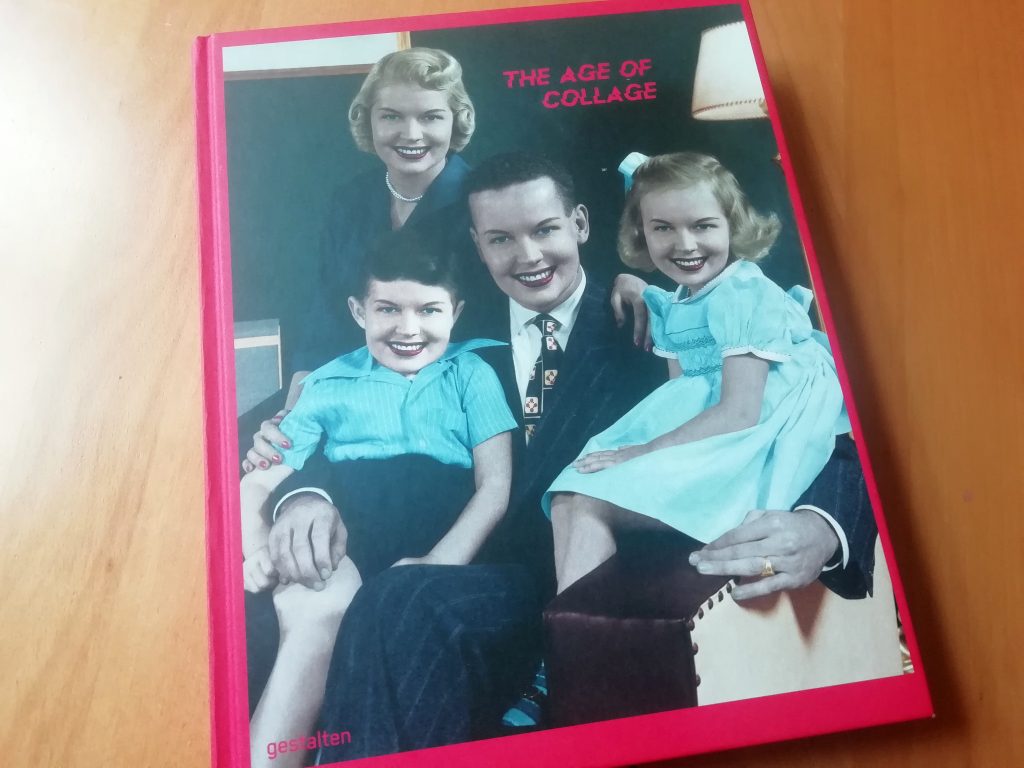
The art form of collage has always been closely linked to photography. Photography played a role in two ways: on the one hand, photographers and collage artists used their own photos, on the other hand, photographs were used as objets trouvés. We remember our own collage phase in our childhood when we combined pictures from mail order catalogs into collages. The glue stick was our best friend. This is just meant as a justification for why I wrote about the book “THE AGE OF COLLAGE VOL.3. Contemporary Collage in Modern Art” from Gestalten-Verlag – here in the photography section of this blog.
In the introduction, the London author and curator Francesca Gavin tells a short story of the collage. „Think about how you look at the world. It is not a linear, coherent experience. Instead, it is a melange of snippets of movement and angles, interspersed with blinking, and put together into something logical by your brain. “ And that’s exactly how the collage works, explains Gavin.
Gavin discovers ancestors of the 20th century art form collage in Japanese calligraphy of the 12th century and in Western European art of the 17th century – and finally in the photomontages of the 19th century. Picasso’s and Braque’s experiments with collages are then seen as the starting point of the art history of collage, without the Cubists being seen as the inventors of collage. Gavin mentions the importance of the Dadaists and the artistic use of collage by Kurt Schwitters and Hannah Höch, for example, and this is how the development of collage in the history of art in the 20th century took its course.
On the importance of photography in the further course of the collage history, Gavin writes: “Photographic material has also been transformed by the digital. The cut itself has become invisible, unless the artist deliberately wants to show it. (…) The function of photographic imagery has completely changed. It is no longer seen as a straight representation of the truth. “ The seemingly inviolable relationship between photography and reality is beginning to become doubtful, the manipulation of photography is gaining a greater role in many ways, and in the collage manipulation is raised to be a basic principle. Digital image manipulation continues this en masse, at the latest after the invention of Photoshop. „The process of addition and removal and combining contrasting elements is not just an artistic process. It is a way of thinking.“
The third collage volume from Gestalten-Verlag contains the works of dozens of collage artists from recent years, for example those of the Canadian artist Peter Horvath, who connected iconic portraits (for example by Frida Kahlo, Jacqueline Kennedy, Angela Davis or John Wayne) associatively with landscapes (John Wayne’s western landscapes), letters, scraps of text, clippings from advertising and film posters and overpainting. Horvath mainly draws on historical material from the 1940s to 1970s and quotes, satirizes, and undermines the advertising language of that time. Horvath’s layers on his collages are sometimes reminiscent of the layers of advertising posters stuck on and partly torn off again on advertising pillars, collages created by poster stickers, as it were, accidentally and unintentionally.
Amsterdam-based collage artist B.D. Graft has a completely different approach. He draws on even older models, classic paintings, documentary black and white photographs, book pages, postcards and pastes them over with yellow, pink or blue surfaces and covers and destroys their originally intended effect. But Graft also sees the constructive nature of his work, namely by making comparisons of his work on remixing and sampling in the music sector.
The Japanese artist Kensuke Koike uses very simple means to alienate old, found black-and-white photographs, for example by cutting out the eyes, nose and mouth of a portrait and sticking them somewhere else; or by cutting up photos and sticking them back together incorrectly. This often creates a surprising, confusing, playful effect.
British artist Seana Gavin produces dream world collages. Typical accessories for her creations are pictures of mushrooms, sections of landscapes, photographs of statues, black and white pictures of clouds of smoke or steam, which are associatively linked to form mysterious nightmare collages. „I am interested in different states of consciousness where the rules of reality do not apply,“ she explains her approach.
The Canadian artist Scott Treleaven works much more simply, but with a comparable dream-like effect, that creates its effect by combining two halved, torn photos into one image. Treleaven, for example, merges a staircase landscape with water reflections, or a nude photo with a sunset, or a blurred parrot photo with the image of some pane. This seems random and associative and it forces the viewer to find narratives, connections and logics that may not even exist.
THE AGE OF COLLAGE VOL. 3 provides a wonderful variety of contemporary collage art. Francesca Gavin’s texts on the individual artists repeatedly come across aspects of the collages that are surprising. And as is often the case with the Berliner Gestalten-Verlag, the book design (Johanna Posiege) ensures a convincing overall effect of this work.
THE AGE OF COLLAGE VOL. 3. Contemporary Collage in Modern Art.
Edited by Robert Klanten and Lincoln Dexter
Texts by Francesca Gavin
Published by gestalten, Berlin 2020